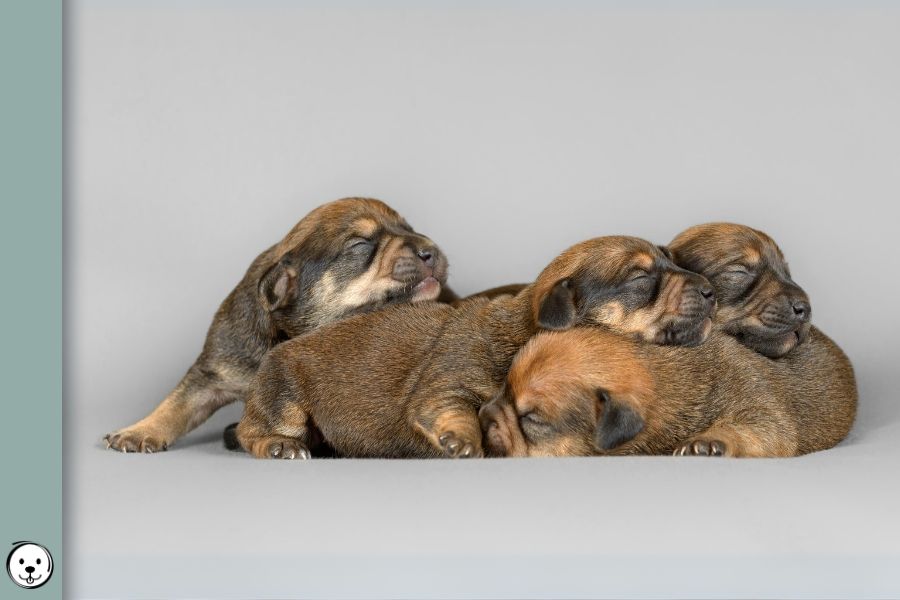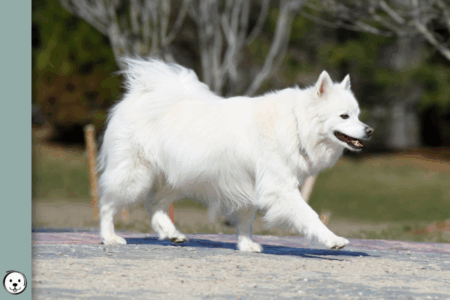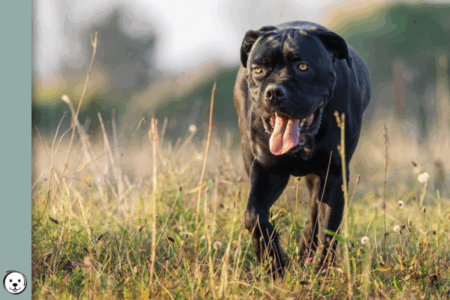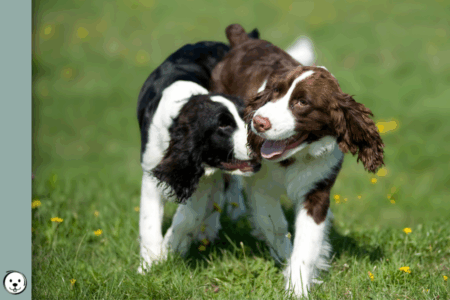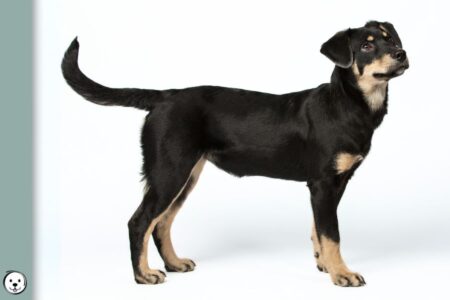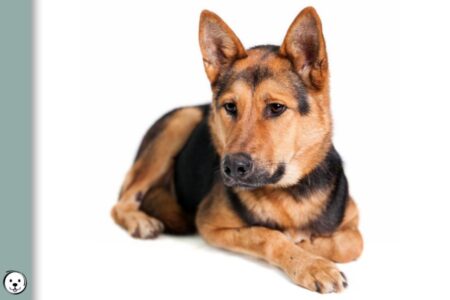Let’s talk about tan markings on puppies. There seems to be some confusion about which patterns come with tan points or how to recognize agouti, sable, or tan point patterns in puppies.
The tan points in a black and tan pattern (at/-) are the defined clear phaeomelanin markings on the cheeks, chin, throat, forechest, lower legs, and paws, under the tail, and over the eyes of a dog.
In short, tan points (or phantom markings in Poodles) are a distinct feature of a black and tan pattern. It may look like it at first, but a puppy can’t have both a sable pattern and tan points!
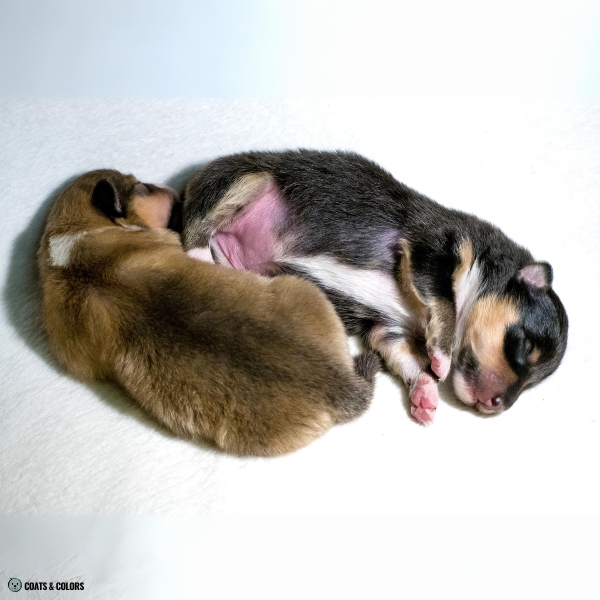
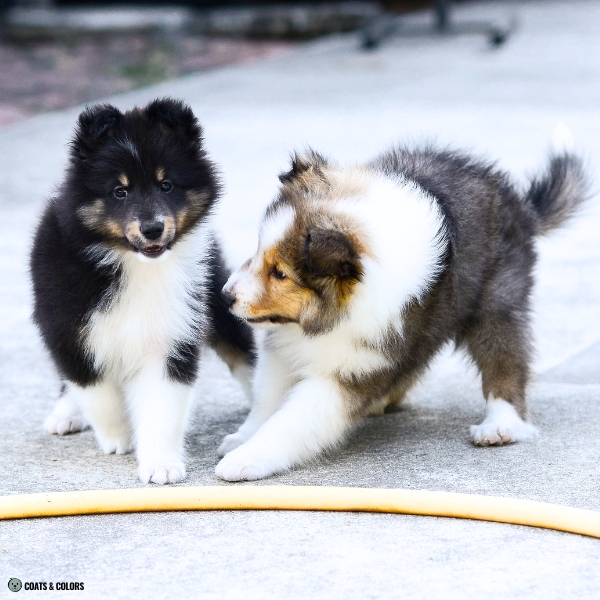
However, heavy shading, often seen in patterned dogs carrying tan points (Ay/at or aw/at) or recessive black (Ay/a or aw/a), can cause a tan-point-like pattern in newborns and young puppies.

But these puppies will mostly lose their false points as their shading clears. As a sable puppy becomes more and more solid tan, these markings begin to blend in with the rest of the pattern.
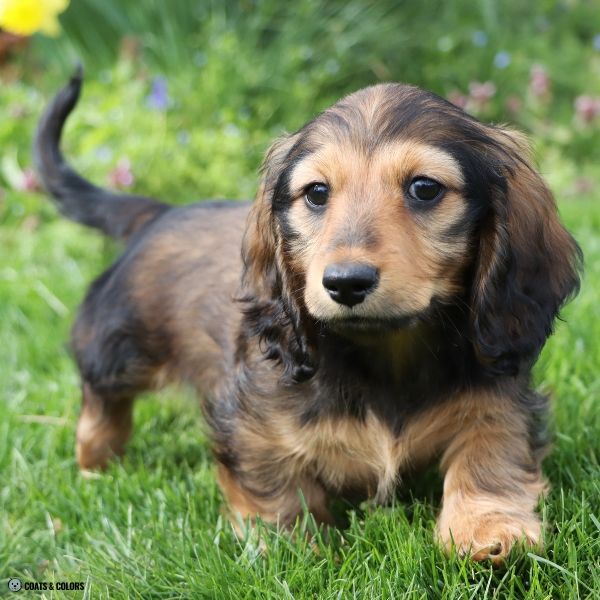
Many heavily shaded sable (e.g. Ays/at) or agouti dogs may also show clear tan markings in their adult coat.
That’s because the points in a black and tan pattern and the clear tan portions in a shaded sable pattern are both derived from the same promoter that causes wild-type tan markings in an agouti pattern.
However, these tan markings are never called tan points unless the dog really is black and tan.
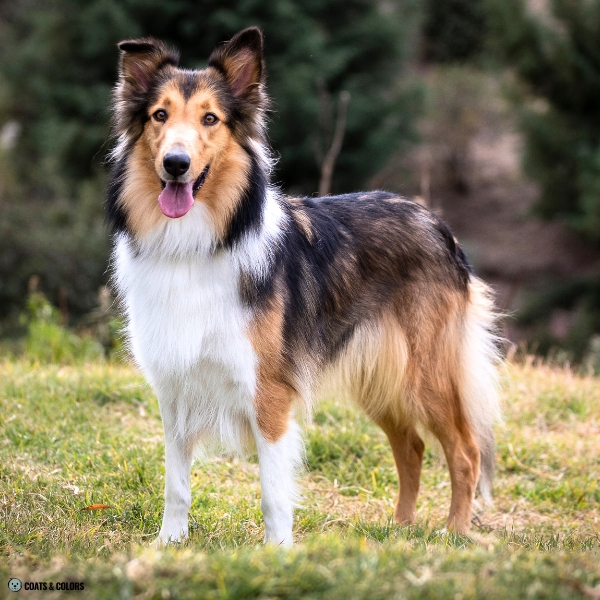
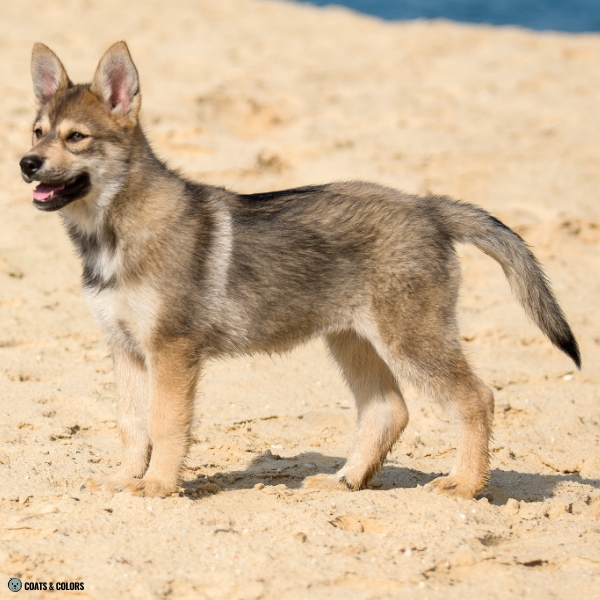
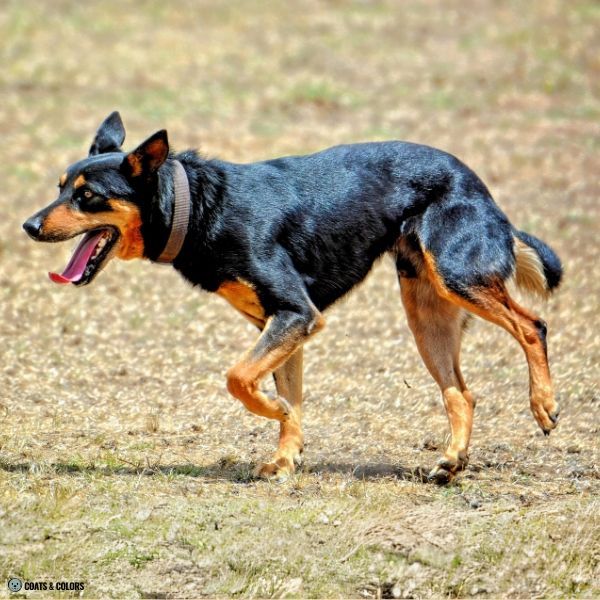
Tan Points In Puppies
Puppies with a black & tan pattern can be born almost black with just hints of red coat under their tail or legs. But they soon begin to show more and more of their tan points.
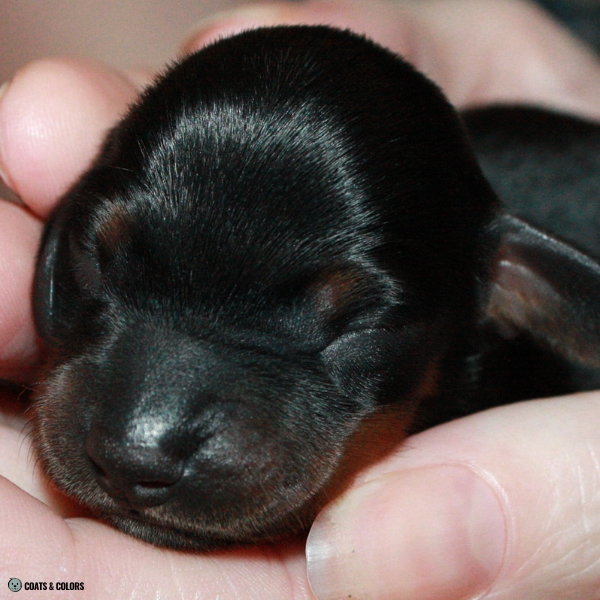
These tan points are located above the eyes, on the cheeks and throat, across the chest, on the paws and lower legs, inside the hind legs, and under the tail.
In adult dogs, tan points can vary slightly in size or have crisp or smutty edges. Some black and tan dogs keep some toe penciling or tar heels and others don’t.
But it’s easy to recognize a black and tan pattern in dogs.
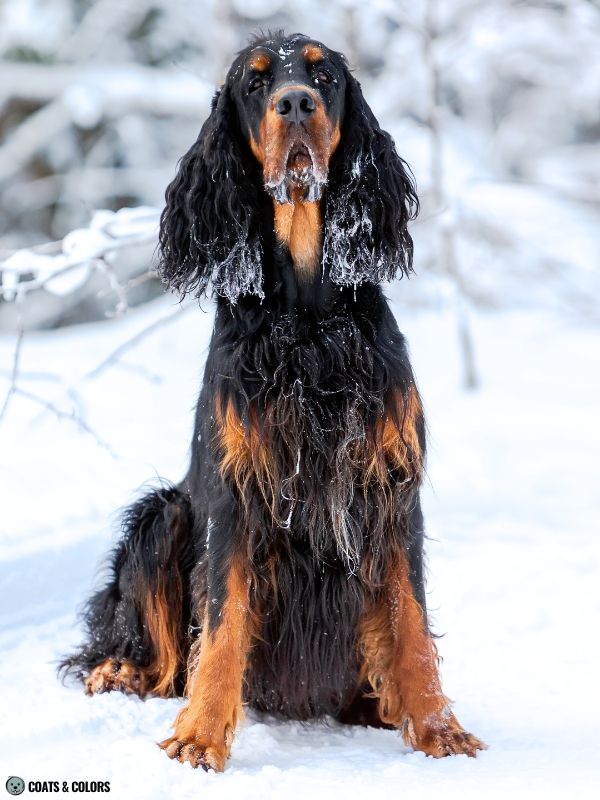
Puppy Markings
Many dogs go through some color change from puppy coat to adult coat.
For example, many shaded sable and agouti pups start out with a lot of very dark overlay.
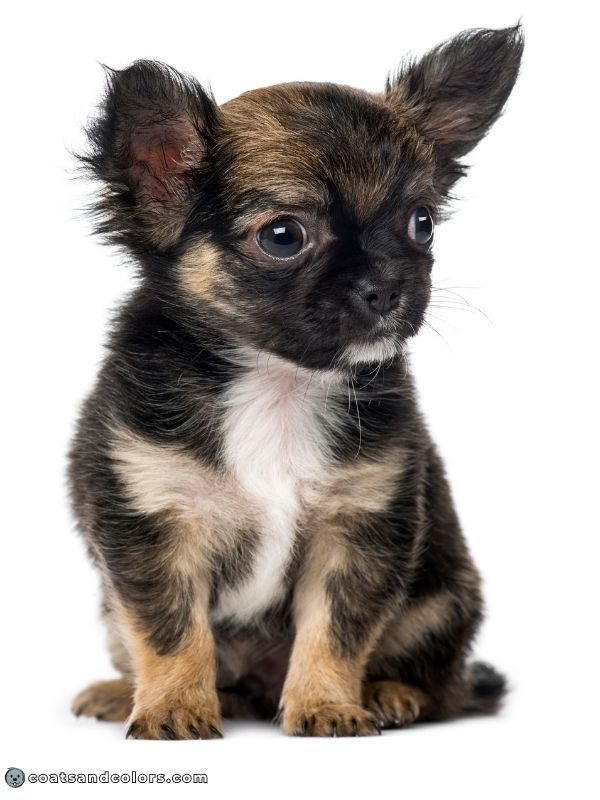
As soon as this dark puppy shading recedes, some clear tan areas may become visible. And these markings can be very defined and noticeable, especially in some of the darker sable puppy coats.
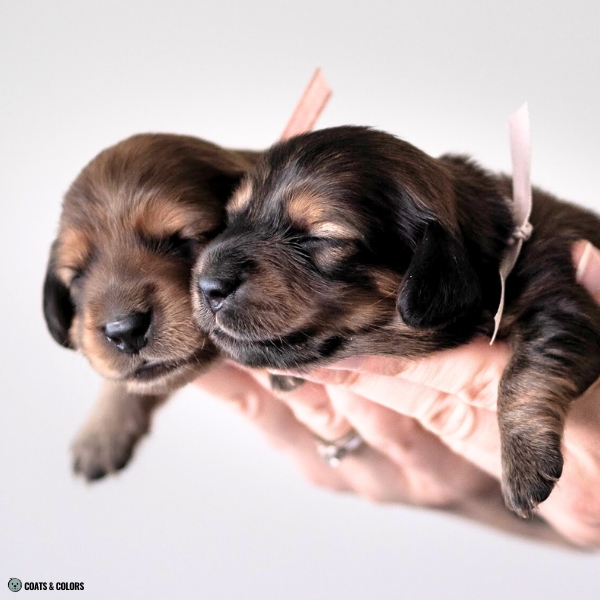
Sometimes, these intermediate puppy colors may temporarily resemble a tan point pattern. This can lead to the false conclusion that a puppy may actually be black and tan when he really isn’t.
A fake point pattern may be present at birth or appear later on.
Some sable puppies clear their overlay more evenly and never show these markings.
But individual puppies may lose their shading at different rates. On many young puppies, these “false tan points” often start to appear first on the lower legs or cheeks. Some puppies get lighter spectacles.


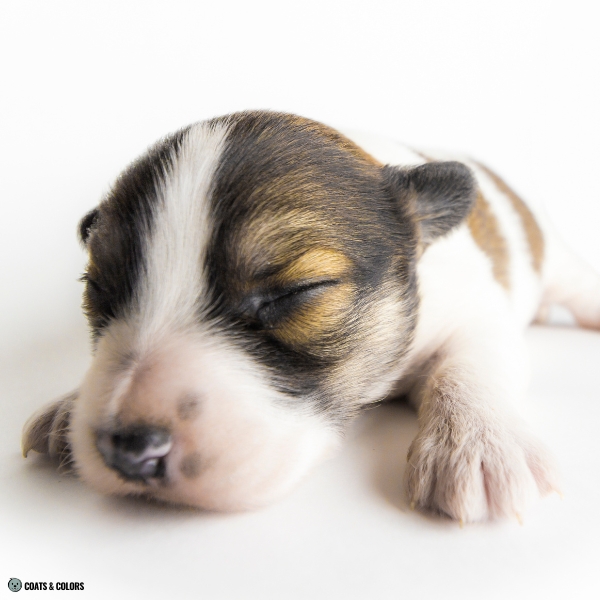
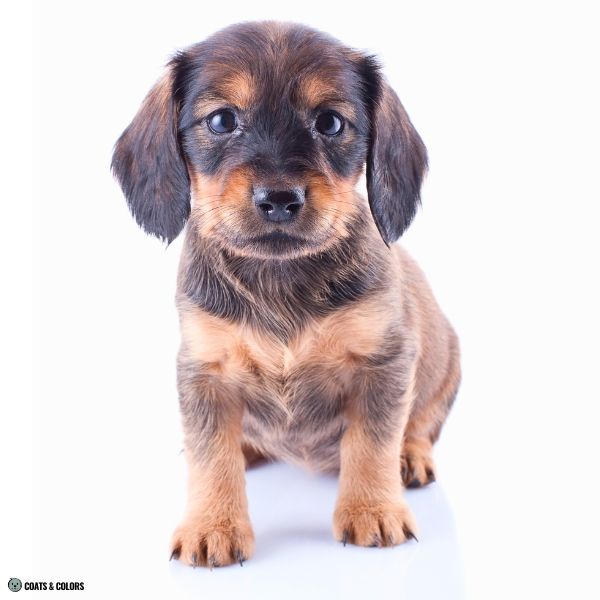
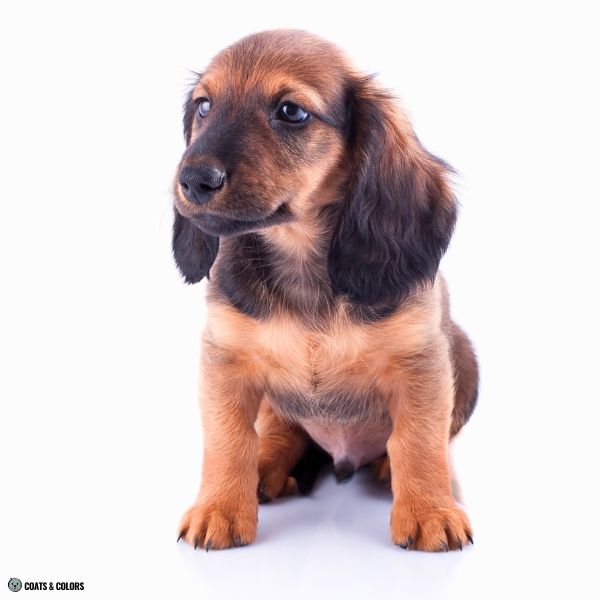
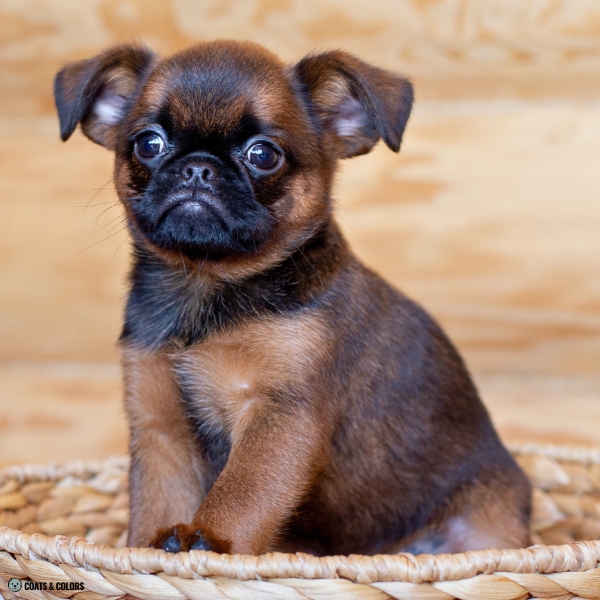
Now, tan point (and many moderately dark agouti) puppies will hold on to the darker portion of their pattern (solid black hairs in black & tan or banded hairs in agouti).
As a result, the contrast between very dark and very clear tan areas keeps their markings visible.
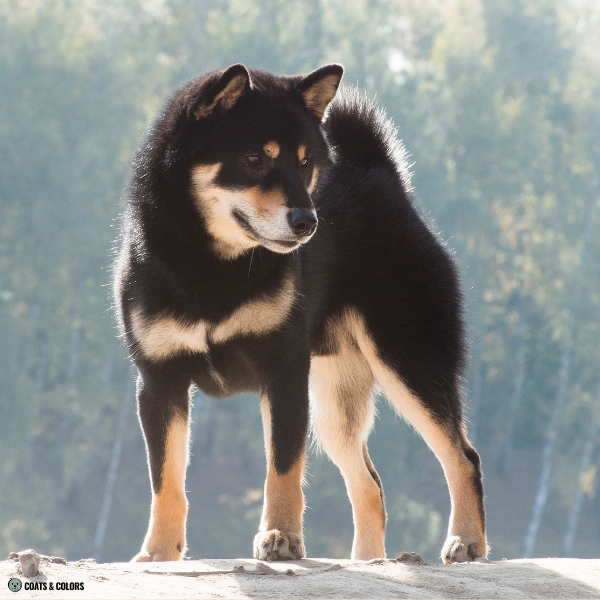
All sable puppies will sooner or later clear most of their puppy shading. Up to a point where these markings gradually blend in with the rest of a then predominantly tan coat. Adult sable dogs have way less eumelanin in their pattern, thus their markings become invisible as they grow.
This often happens at a young age. But some heavily shaded pups may lose the rest of their pseudo markings only later when they shed their puppy coat and clear into their “pale phase“.

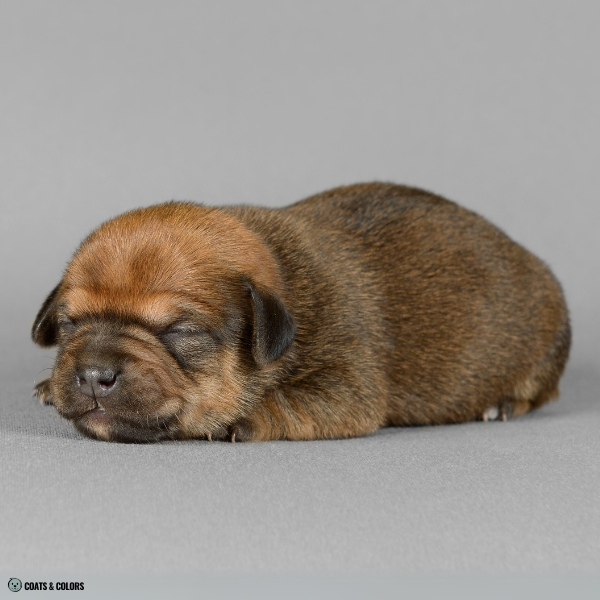

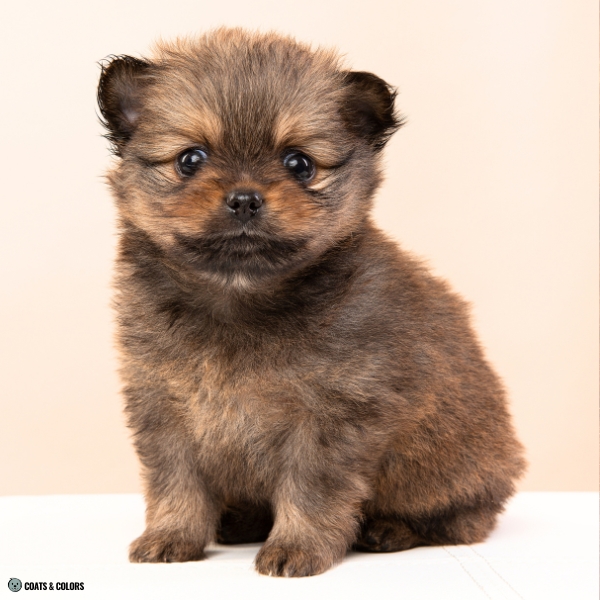
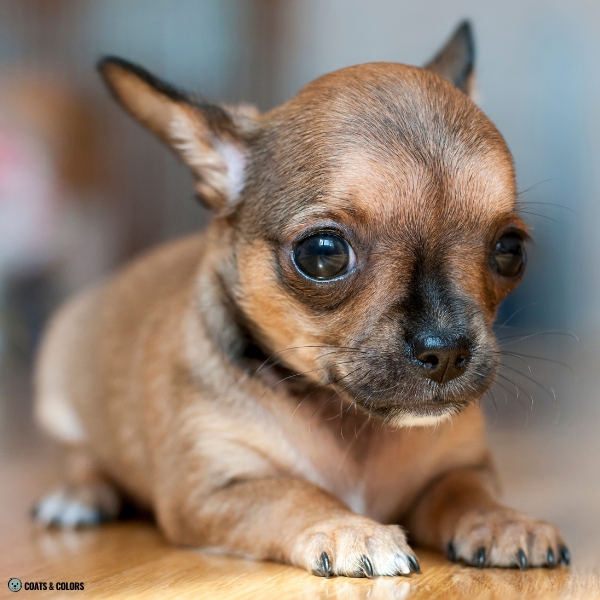
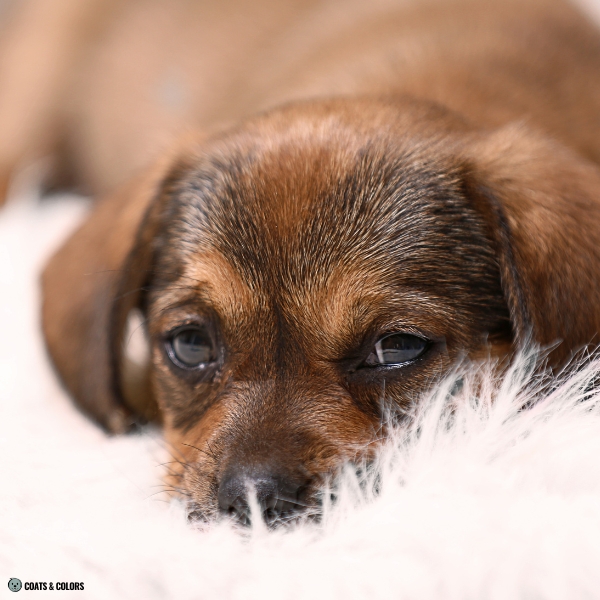
As the dark shading clears from a sable puppy, you’ll notice more and more tan pigment showing behind the ears, neck, back, or creeping up the legs.
The tan on a sable or agouti puppy eventually grows beyond what a truly black & tan puppy would have.
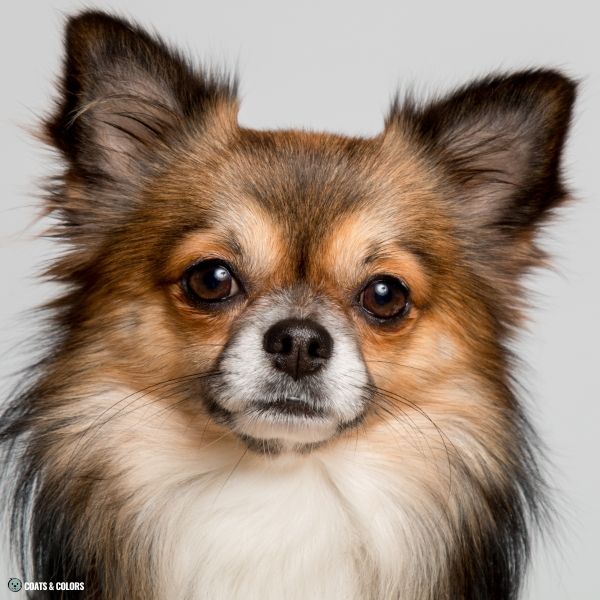
One of the defining features of a sable pattern is the clear tan face with no black below the eyes or down the nose. And we won’t be able to see clear markings on a clear background, now will we?
And these crisp tan markings can only remain visible as long as they are framed by darker dorsal coat.
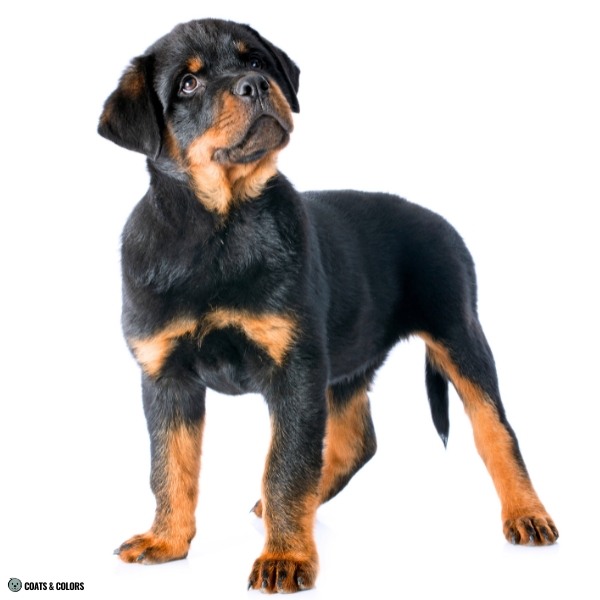

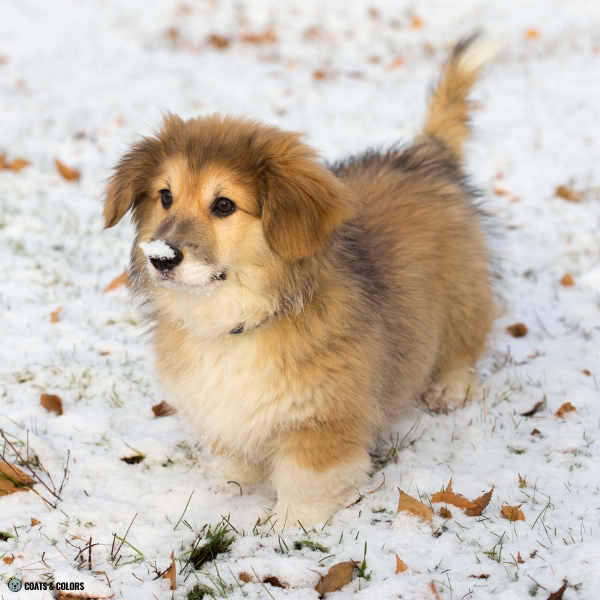
A lot of young sable puppies are mislabeled as black-and-tan because their pigment distribution resembles tan point markings. For example, Poodle folks sometimes call these puppies “sable phantom” (phantom is black and tan in Poodles) which is misleading since a dog can not be both!
False points may be more pronounced in dogs with an overall darker pattern. They are often(but not exclusively) seen in dogs that carry a copy of tan points (Ay/at) or maybe recessive black (Ay/a).
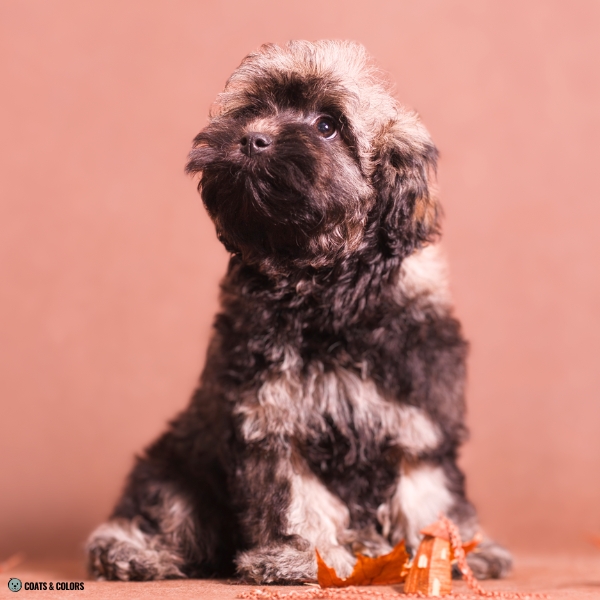
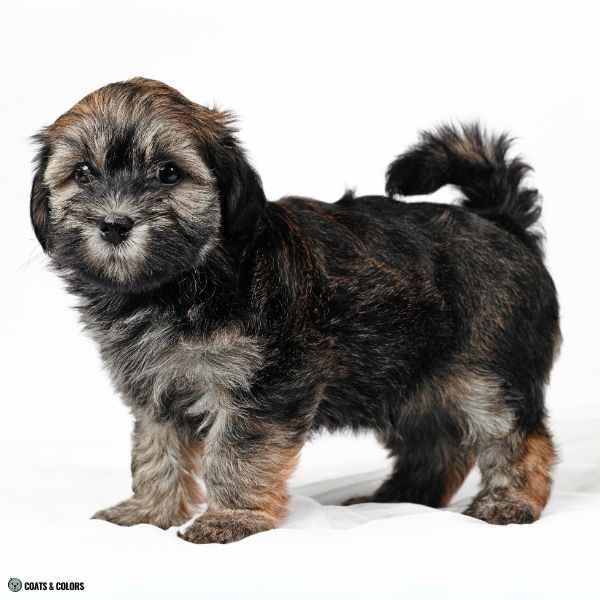
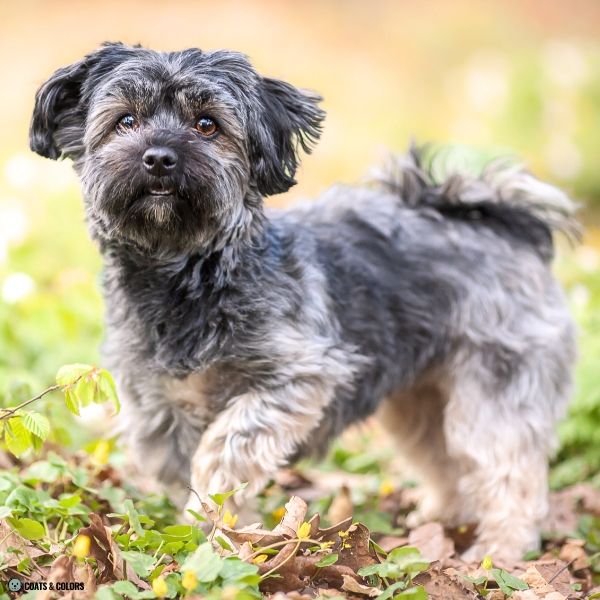
Not all, only some Ay/at puppies show on average more heavy shading with pronounced clear markings. Others turn yellow more evenly with no hint of any faux points in their coat.
The A locus patterns are just notorious for sometimes giving these intermediate patterns in dogs with a heterozygous genotype. And even siblings with the same genotype may not always look the same.
Overall, puppy color change in A locus patterns can be hard to predict.
The tan markings can be more pronounced in long-haired sable and agouti dogs. That is because heavy eumelanin shading can produce an almost blackish coat and bring out these pseudo points.
But some short-haired dogs can also produce heavy shading. And a few breeds like Malinois and American Akita are known to sometimes produce super extended black shading in their sables.
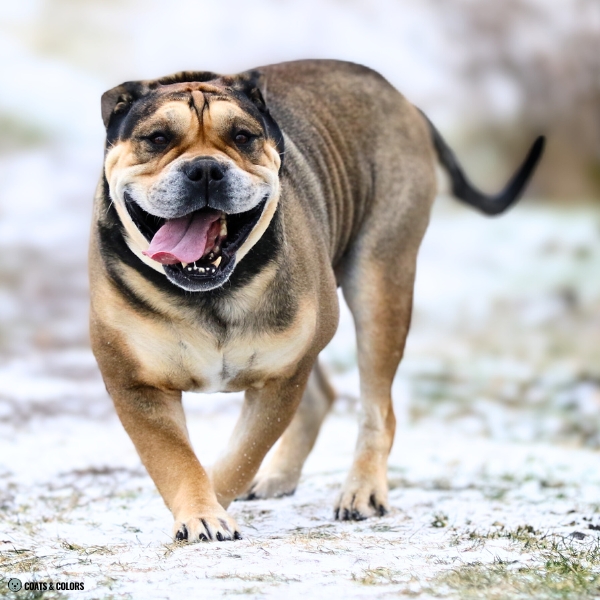
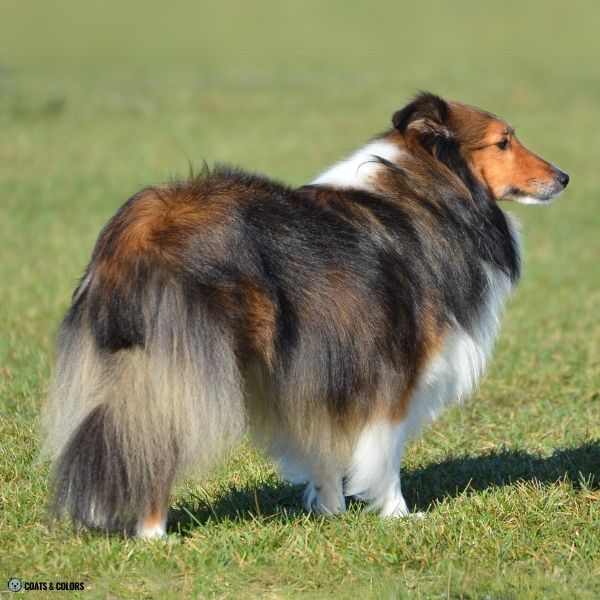
But adult dogs with a sable pattern will always have a mainly clear tan face. They lack the black face markings such as a black nose bar you expect in a black-and-tan pattern.
Of course, patterned dogs can be masked. And light tan cheeks peeking out from behind a black mask can sometimes add to the illusion that a dog had tan points.

And some especially dark agouti patterns (often found in aw/at or aw/a dogs) can be banded so heavily that they can look very much like a black & tan dog from afar.

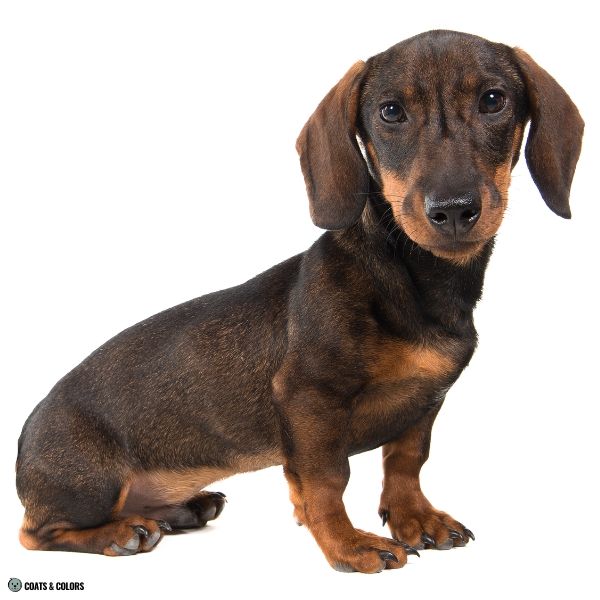
In summary, many dogs only show these fake markings when very young and will soon outgrow their darker puppy coat and weird markings. And while some adult dogs with a sable or agouti pattern may still show these clear markings, those are typically not called tan points.
Wild Type Markings
In 2021, a study identified two promoter regions that control A locus patterns[1].
The ASIP gene holds the building plan for a signalling protein that triggers pigment cells to produce phaeomelanin. And these promoters are sequences of DNA that affect ASIP expression.
The hair cycle promoter (HCP) affects how long the tan bands in the banded coat will be.
The ventral promoter (VP) affects how large the clear tan areas on the dog’s ventral side can grow.
Combinations (or haplotypes) of the two promoters (HCP*-VP*) represent the known A locus alleles.
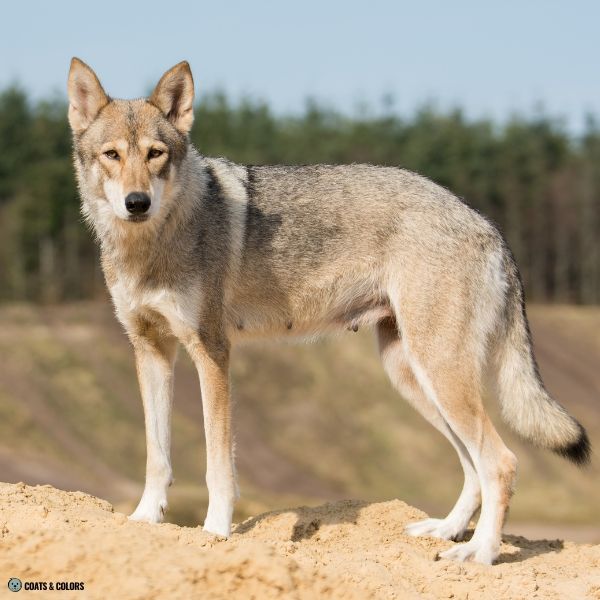
Agouti dogs have normal tan banding (HCP2) and normal ventral tan (VP2).
The placement of pigment types in an agouti coat represents the wild type pattern in dogs.
The agouti pattern consists of sections with banded coat located on the dog’s upper body and face, and sections with clear phaeomelanin markings mainly located on the dog’s lower face and body.
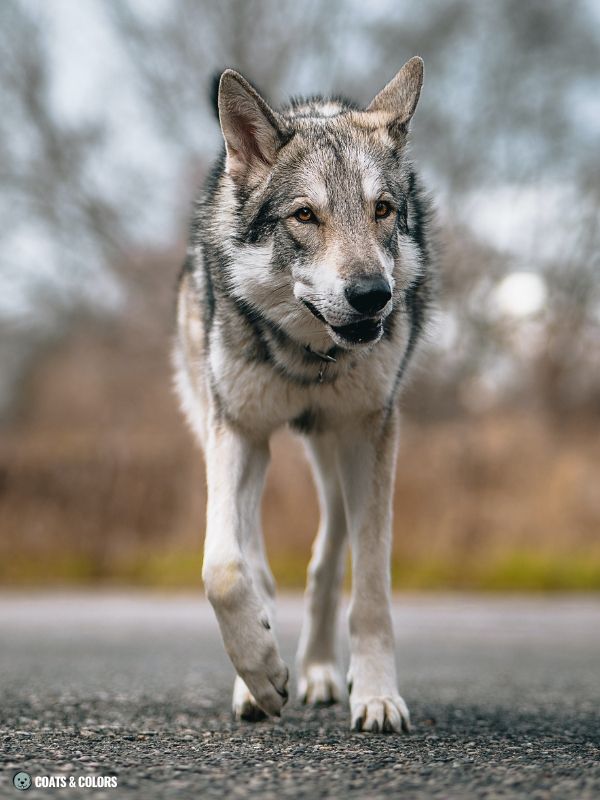
Agouti (aw) is the wild-type pattern in dogs. All the other A locus patterns have been derived from the wild-type pattern at one point. Both shaded sable and black-and-tan are caused by mutations in the aw allele.
The difference is that black and tan dogs have solid black instead of banded hairs. And shaded sables have upregulated tan banding so that their banded hairs are mostly tan with just a black tip.
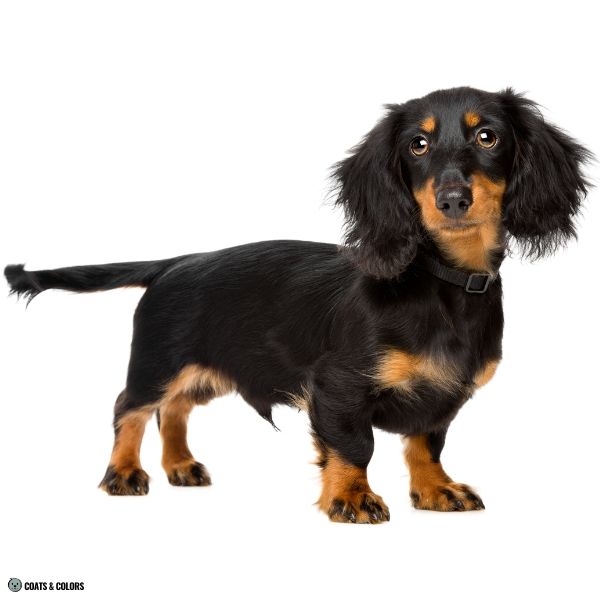
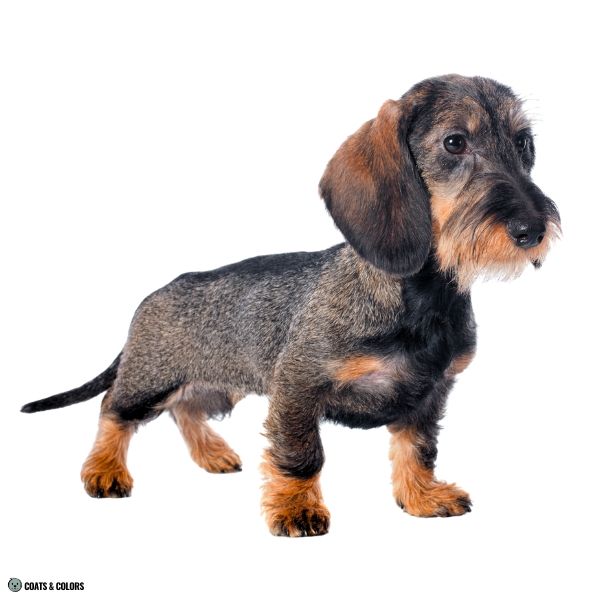

But both a shaded sable and a tan point pattern happen to have the same wild-type ventral promoter (VP2) as agouti. That’s why these patterns give clear ventral tan markings in roughly the same location!
These tan areas just happen to be the first to clear in puppies, regardless of their A locus pattern.
That’s because ASIP production is delayed in young puppies (ASIP triggers the production of tan pigment). And ASIP production starts just a little earlier on the ventrum than on the dorsum. So the ventral tan markings appear slightly before the dorsal coat starts to clear.
The clear markings in a sable or agouti pattern could be called wild-type markings.
While the markings are roughly the same, the term “tan points” is reserved for black & tan dogs.
Learn More
Links
[1] Bannasch, Kaelin, Letko et al. (2021): Dog colour patterns explained by modular promoters of ancient canid origin. Nat Ecol Evol 5. https://doi.org/10.1038/s41559-021-01524-x
Image Credits
© dpcrestock/yayimages.com
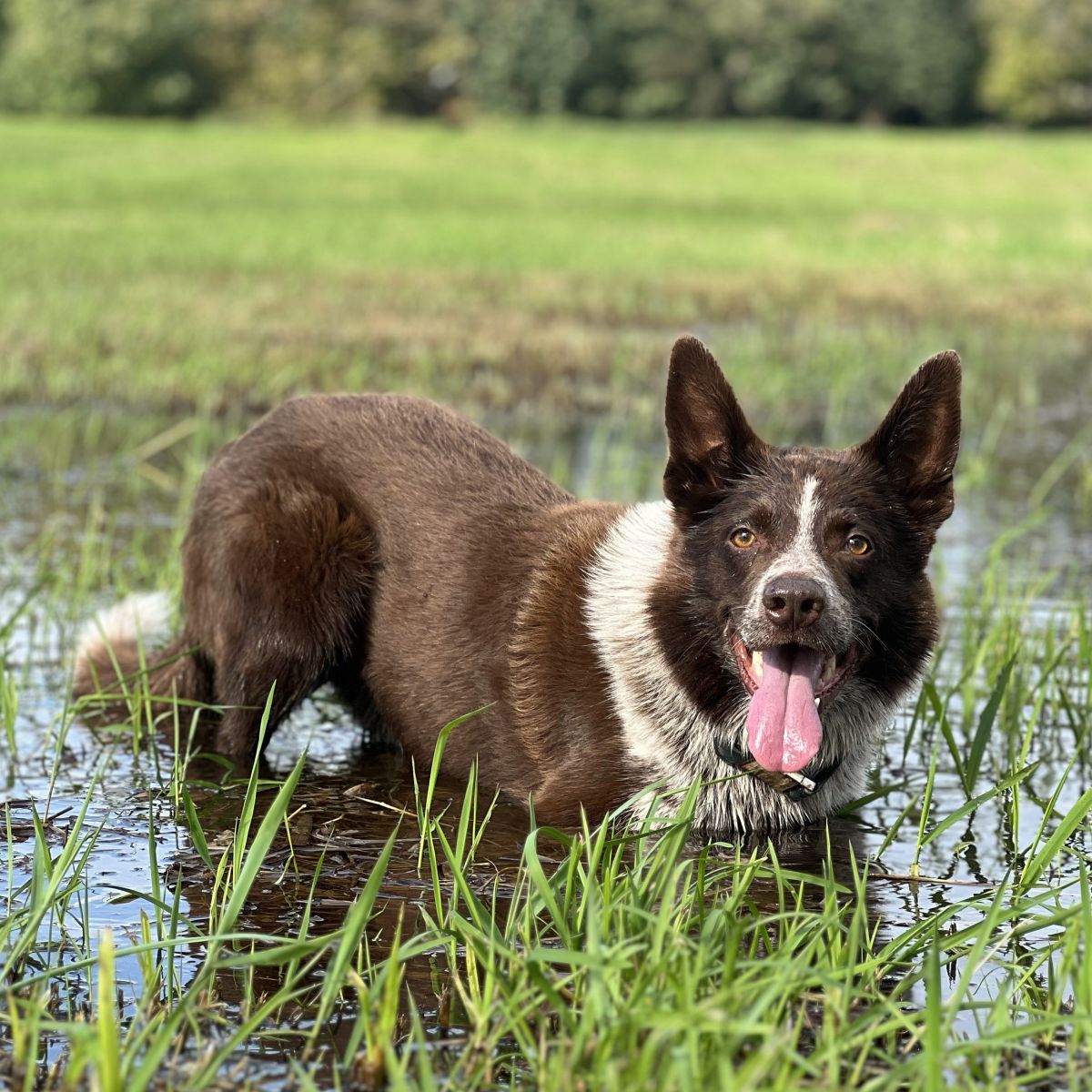
Hi! I’m Steffi. I am a biologist and a big time dog nerd. You are curious about coat color genetics? You’ve come to the right place! Read more.

